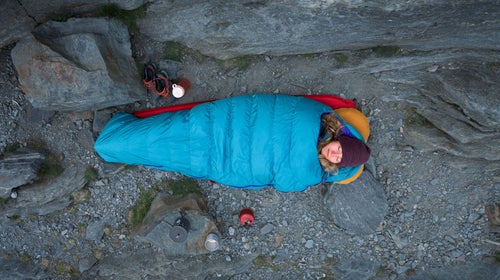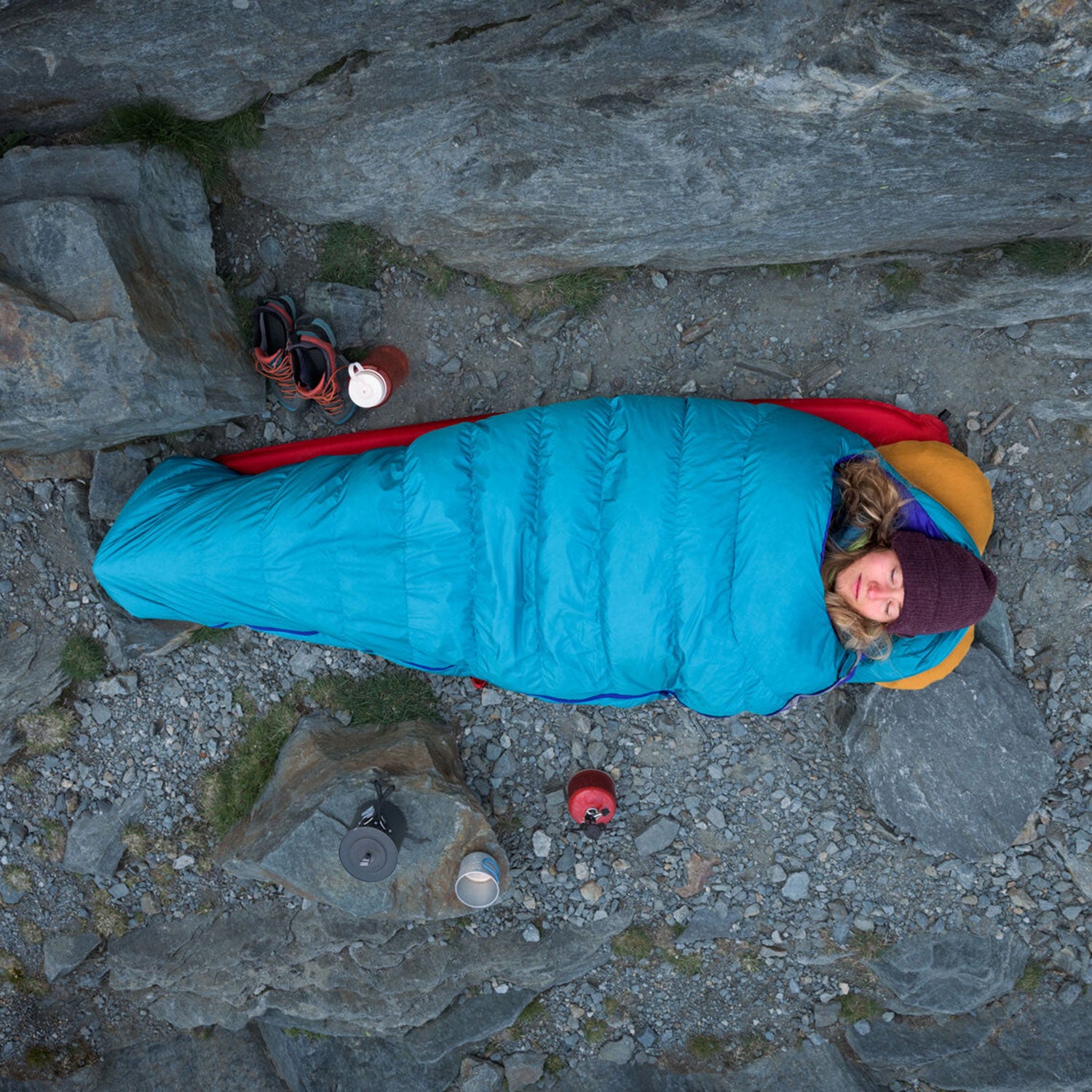I was a few minutes early to one of the sessions at last week’s Sport Innovation Summit, the annual gathering of Canada’s top sports scientists and coaches, so I had a chance to make some small talk with the speaker, sleep expert Charles Samuels. I was really looking forward to the presentation, I told him, because I normally spend so much time writing about purported recovery techniques like ice baths and compression garments and cryosaunas, where the evidence is somewhere between slim and non-existent. What a relief to look instead at sleep, the one recovery modality backed by iron-clad evidence.
“Oh, do you think so?” Samuels asked politely, with just a hint of a smile. I paused, and then started to backpedal: “Well, I guess there’s maybe not all that much evidence, but… it just, you know, makes so much, uh, sense.” Point taken—and I knew at that point that I was really going to enjoy the talk.
Samuels runs the Centre for Sleep and Human Performance in Calgary, and has become the go-to contact for elite athletes in Canada and beyond who are looking to optimize their sleep. But he’s not one to overstate the evidence or offer miracle cures. Instead, he gave a great talk on the specific sleep challenges athletes face, and some of the tactics that might—or might not—help tackle them. Here are a few of the messages that stuck with me.
Stay Low-Tech
To be honest, the biggest takeaway I expected to get from this talk was a list of Samuels-approved apps and wearable devices for tracking and analyzing sleep. But at one point, he asked for a show of hands from the audience, which consisted mostly of training staff from various Olympic sports, to see how many were using watches or other wearables to track their athletes’ sleep. No one raised a hand. “Good,” Samuels said. “Don’t.”
That’s not to say that all information about sleep is bad. In fact, one of the first things Samuels does with prospective new patients is ask them to keep a pen-and-paper sleep log for 30 days. The information in those logs can reveal all sorts of useful information like total weekly duration of sleep, regularity of sleep habits, late or early circadian bias, and so on. But pervasive sleep tracking can create its own sleep-troubling anxiety. For athletes who use sleep trackers on themselves and find it useful, that’s no problem. But for a coach or trainer to impose it on a team is more problematic. The simplest and most accurate way of assessing how someone is sleeping, Samuels said, is to ask them: “How are you sleeping?”
Nap Wisely
Last year I wrote about an attempt to test to the performance-boosting power of napping in a randomized controlled trial, with intriguing but not conclusive results. Samuels didn’t have any conclusive proofs to add to this picture, but he had some practical advice.
Time your naps about 12 hours from the middle of your usual sleep period. If you usually sleep from 11 P.M. to 7 A.M., that means napping around 3 P.M. Aim for naps of between 15 and a maximum of 30 minutes. At this point, someone asked when you start the timer. “When I say nap, I mean lying down, eyes closed, deep breathing,” he clarified. “I couldn’t care less if you sleep. This is about brain rest.” If you can’t sleep and your brain won’t settle down, consider meditation instead.
When you wake up from a short nap like this, you should feel refreshed and alert within 15 to 30 minutes. You can consider having a coffee before your nap to help the subsequent wake-up process. If your post-nap grogginess persists longer than that, it suggests there’s something else going on, like a chronic sleep deficit. If you need a longer nap for a specific reason, for example to handle travel fatigue after a long flight, you can bump it up to 60 or even 90 minutes.
Enjoy Your Weekends
The faintly puritanical advice I’ve always been given (and dispensed myself) is that trying to sleep in on weekends in counterproductive, because it messes up your sleep routine—and when it comes to sleep, Samuels pointed out, the number one word is routine.
But he wasn’t quite as dogmatic about weekends as I expected. One way to think about sleep is to add up how much you need per week, and compared it to how much you’re getting. Most athletes get somewhere between seven and 7.5 hours of sleep per night, which adds up to about 50 hours of sleep per week or a little more. “We think—but we don’t know—that most athletes need more than eight hours a night if they’re training hard,” Samuels said. That’s a minimum goal of 56 hours a week.
If you’re aiming for 56 hours of sleep a week and getting, say, 51, that’s a sleep deficit of five hours. That’s not too crazy. “If the weekly sleep deficit is 20 hours, you’re in trouble, because you can’t make that up on weekends,” Samuels said. “If it’s five hours, then you can maybe work with that.”
Still, weekend sleep-ins are not an optimal strategy, because they shift your sleep rhythms later, which will make Monday morning all the harder—and start the cycle of missed sleep all over again. In general, for someone with typical sleep patterns (i.e. neither a night owl nor an early bird), sleeping past 10 A.M. on a weekend is a bad idea. The better option is prevention rather than cure: if you know you’re going to miss some sleep, perhaps due to travel, there’s some decent research showing you can bank sleep in advance to cushion the impact. The key: start modestly by adding 15 minutes a night to your regular sleep.
Don’t Do Drugs
The top-line advice here is pretty simple: Samuels and his colleagues “really, really try to avoid using medications in athletes.” Some athletes may be on sedatives that affect sleep for other reasons, for example, psychiatric conditions. But otherwise, they mainly use sedatives for short-term issues like travel. “The random use of sedatives is not cool,” Samuels said, “but for sleeping on a plane, sure, that’s OK.”
The most overused sleep medication is probably melatonin, a circadian hormone that helps regulate sleep and wake cycles. Lots of people take it without any clear understanding of what it’s supposed to do or how it might work. As a tool to fight insomnia, it’s probably not much use: one meta-analysis found it helped people get to sleep 7.2 minutes sooner.
It may be useful for jet lag, though the precise dosing and timing for different situations is complex enough that Samuels recommends consulting a doctor or sleep expert. One very broad rule of thumb, from a set of guidelines he published in the Clinical Journal of Sports Medicine: after crossing at least three times zones in an easterly direction or four time zones in a westerly direction, take 3 to 5 mg of melatonin 30 minutes before bed. (For reasons that aren’t entirely clear, it’s a little easier to delay your circadian clock by a few hours, as required after an westerly flight, than it is to crank it forward.) At worst, it won’t hurt you—well, other than a few potential side effects like nightmares.
Don’t Look for Nonexistent Problems
It’s easy to get wound up about sleep. So it was reassuring to hear Samuels offer some takes on what counts as normal. Does it take you 20 or 30 minutes to fall asleep in the evening? Do you wake up during the night sometimes, then fall back asleep? In the morning, does it take some time—perhaps as much as an hour—before you feel refreshed and awake? If so, relax. None of those things indicate a sleep problem.
To find out if you do have a problem, Samuels has developed a tool called the Athlete Sleep Screening Questionnaire, which can you can take online. If nothing else, it can be reassuring: I got a “Sleep Difficulty Score” of 4 out of a possible 17, which indicated that I have no clinical sleep difficulty. (A score of 5 would have indicated a mild issue.) That’s good to know—and it’s also a reminder that there are no miracle improvements waiting for me if I could just hyper-optimize this aspect of my life. That, in the end, was the final point Samuels emphasized in his talk. Yes, rest and sleep are important for recovery, and if you have issues you should seek help to address them. But when it comes to sleep, there are no bonus points for being better than normal: “If you get what you need,” he said, “that’s as good it as it gets.”
My book, Endure: Mind, Body, and the Curiously Elastic Limits of Human Performance, with a foreword by Malcolm Gladwell, is now available. For more, join me on Twitter and Facebook, and sign up for the Sweat Science email newsletter.

